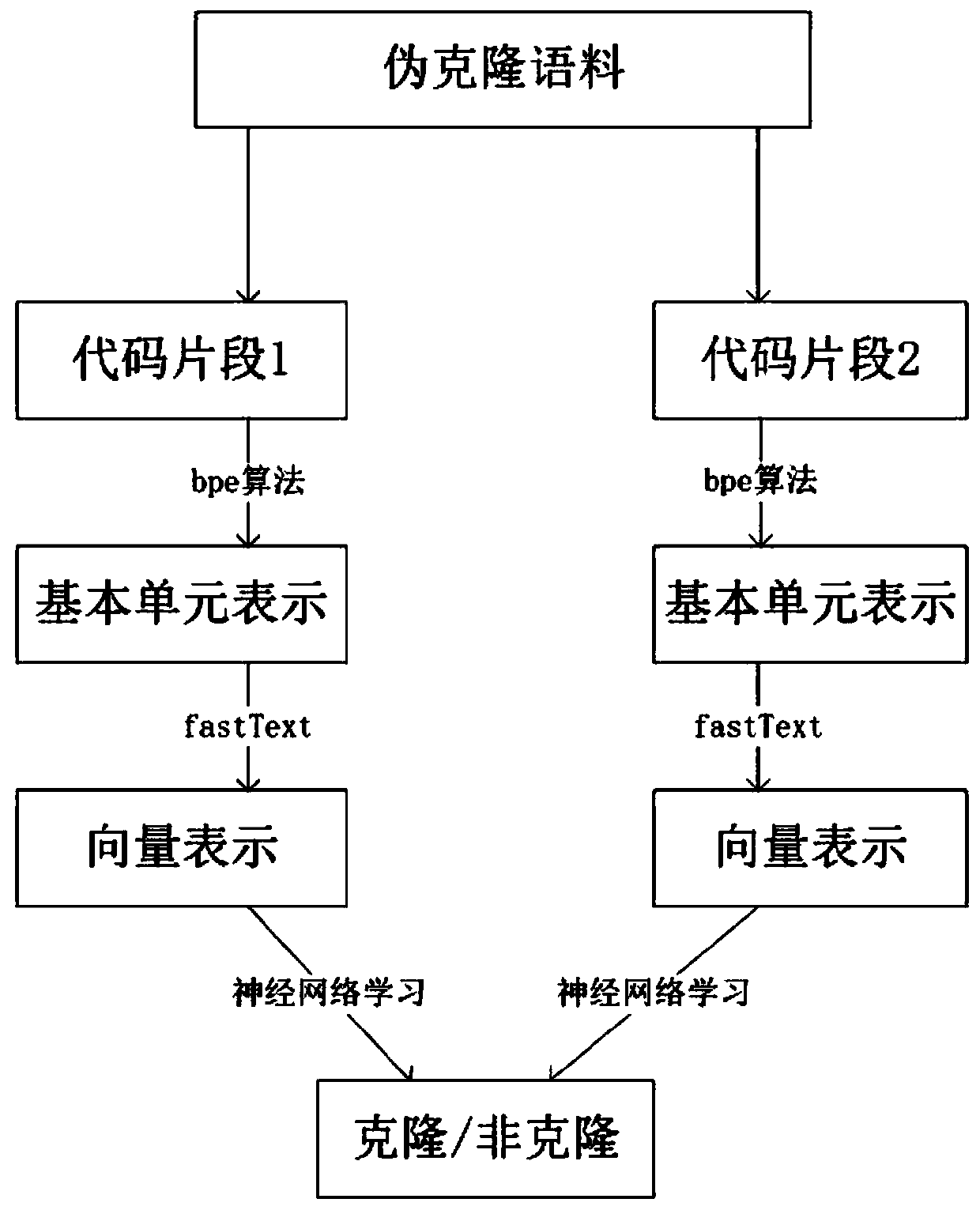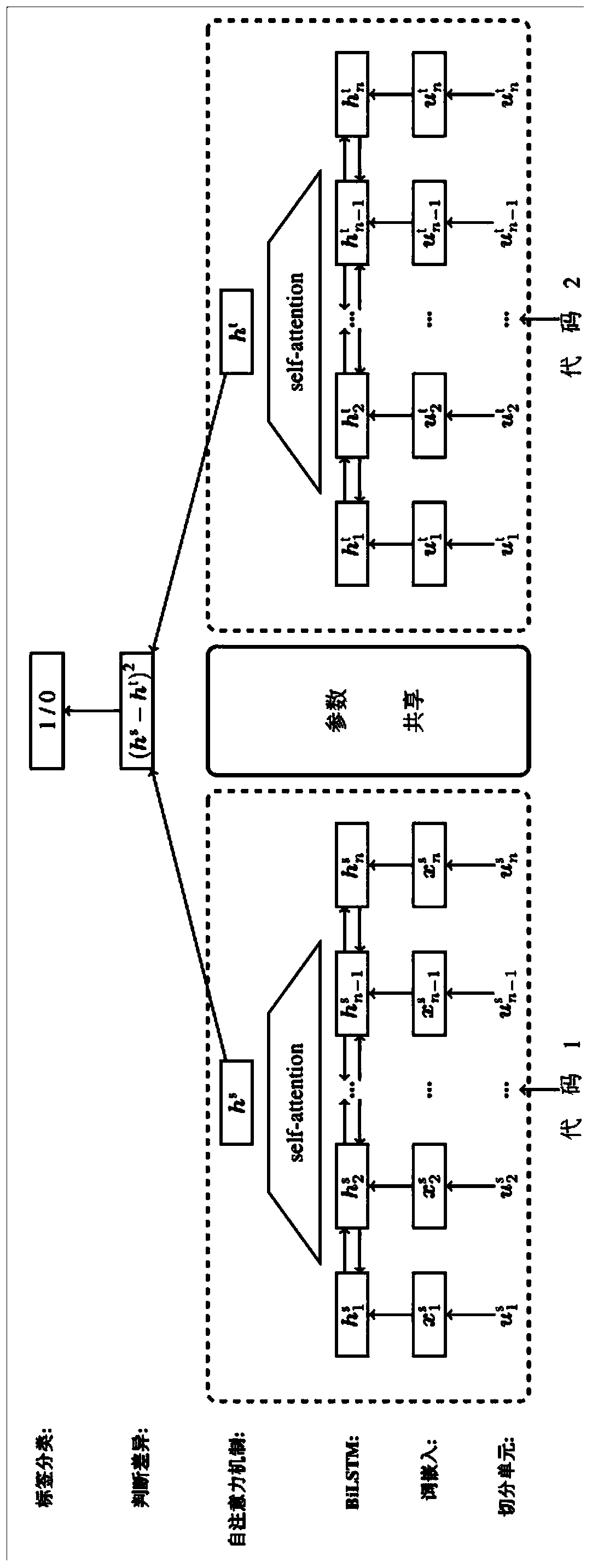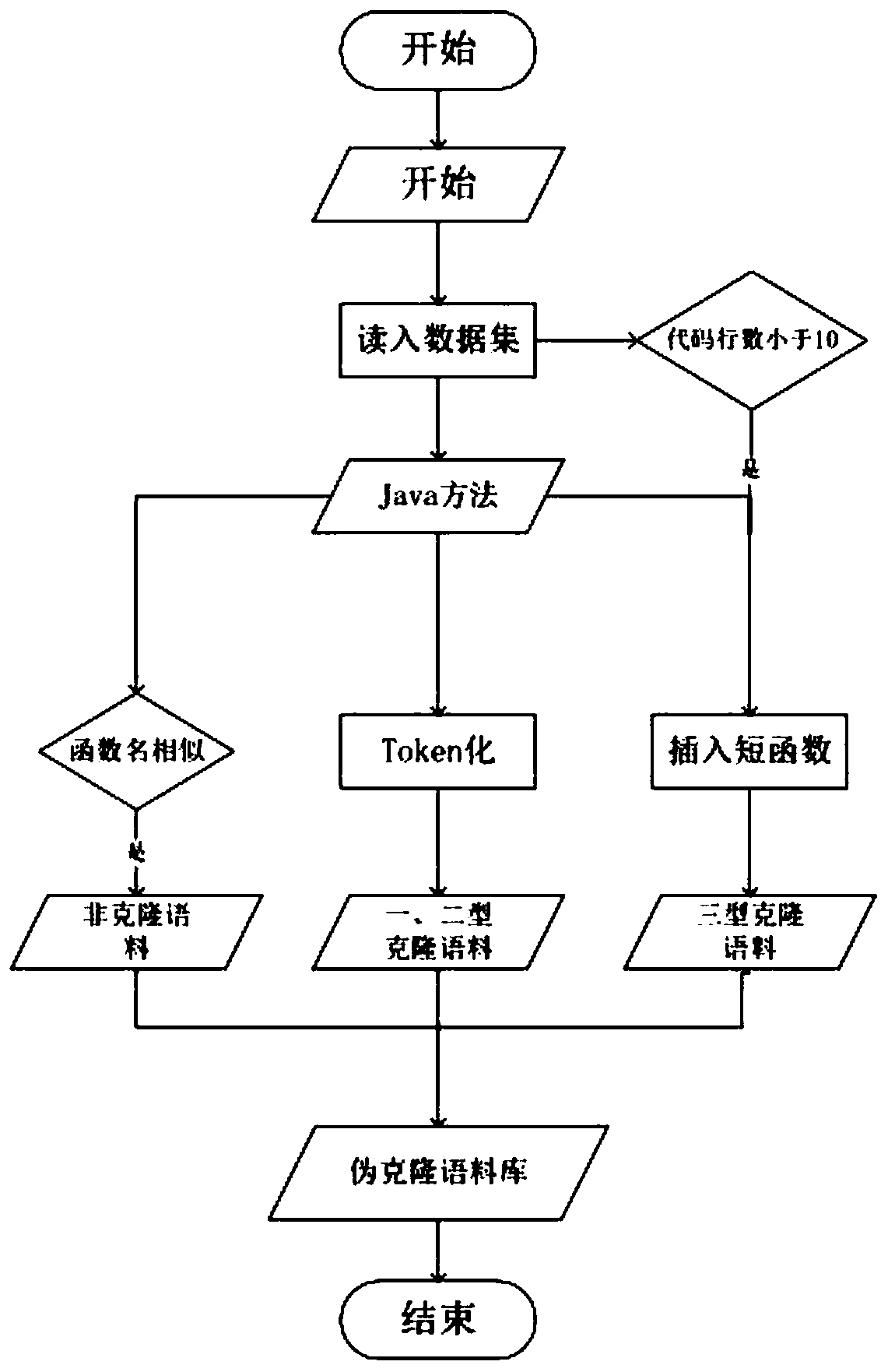Clone code detection method capable of automatically constructing and utilizing pseudo-clone corpus
An automatic construction and code detection technology, which is applied in the field of program analysis and machine learning, can solve problems such as lack of accuracy, good time and space efficiency, and difficulty in code clone detection, achieving the effect of improved efficiency, low cost, and simple and fast process
- Summary
- Abstract
- Description
- Claims
- Application Information
AI Technical Summary
Problems solved by technology
Method used
Image
Examples
Embodiment Construction
[0019] The technical solution of the present invention will be described in detail below in conjunction with the accompanying drawings and embodiments.
[0020] The clone detection method of the present invention takes the program method as the granularity, that is, detects two similar methods in java projects, and judges them as clone pairs. Through a reasonable method to determine what is the most basic code unit, these code units can effectively represent the vocabulary and grammatical information that the source code can use in code clone detection; and then by embedding the basic unit word of the program code into a vector , using a supervised classifier to detect code clone pairs; and creatively proposed a new method of using a pseudo-training corpus to train a neural code clone detection model, which can realize the automatic construction of a large-scale pseudo-training dataset at zero cost.
[0021] Such as figure 1 As shown, it is a flow chart of a clone code detect...
PUM
 Login to View More
Login to View More Abstract
Description
Claims
Application Information
 Login to View More
Login to View More - R&D
- Intellectual Property
- Life Sciences
- Materials
- Tech Scout
- Unparalleled Data Quality
- Higher Quality Content
- 60% Fewer Hallucinations
Browse by: Latest US Patents, China's latest patents, Technical Efficacy Thesaurus, Application Domain, Technology Topic, Popular Technical Reports.
© 2025 PatSnap. All rights reserved.Legal|Privacy policy|Modern Slavery Act Transparency Statement|Sitemap|About US| Contact US: help@patsnap.com



